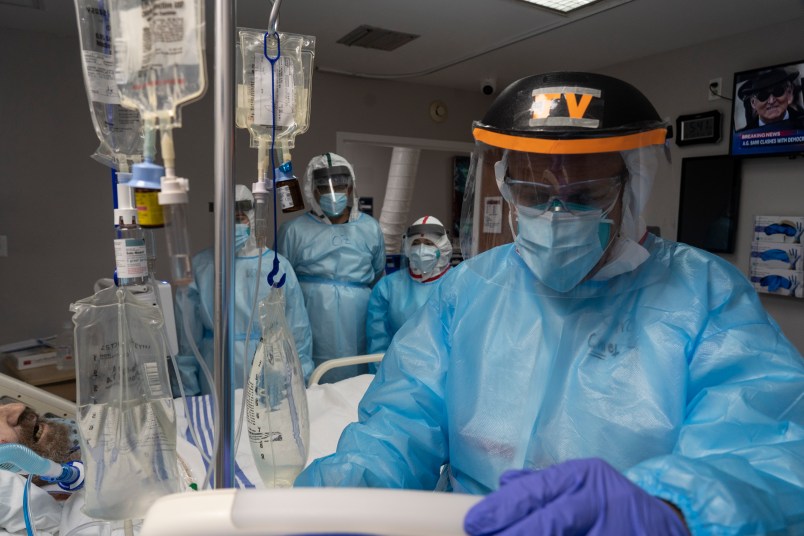The Centers for Disease Control and Prevention only found out after-the-fact about a sudden Trump administration decision to use a private contractor to collect COVID-19 data from hospitals. Until this month, the CDC had used its own system for tracking hospital data to keep tabs on COVID-19.
The contractor, a Pittsburgh-based company called TeleTracking, is now the federal government’s preferred collection point for hospital data — everything from ventilator use to supplies of Remdesivir, a drug found to be helpful in treating the virus.
While hospitals were initially given the option of reporting their data to either TeleTracking or the CDC’s National Healthcare Safety Network — a well-established system known for tracking healthcare-associated infections and other data — earlier this month HHS abruptly told hospitals that the NHSN system would no longer accept data submissions.
Hospitals were given just days to make the change — leading to concern and frustration from public health experts and hospital administrators.
“We weren’t directly involved in the final decision” CDC Director Robert Redfield testified to the House Select Subcommittee on the Coronavirus Crisis on Friday.
Rep. Maxine Waters (D-CA) pressed for more: When did Redfield find out about the change? she asked.
“I wasn’t involved in the decision,” Redfield repeated. “I don’t remember the exact date.”
“Am I to understand that you were not told at all?” Waters asked.
“Well I was told, actually, once the secretary’s office made the decision, that that was the decision,” Redfield said, referring to the Secretary of Health and Human Services Alex Azar.
Since the administration’s shift to TeleTracking was announced earlier this month, in a July 10 memo to hospitals, Redfield has sought to assure the public that the CDC — which is housed within HHS — was fully on-board with the decision.
On a July 15 phone call with reporters, the same day hospitals were asked to stop submitting data to the CDC, Redfield said that “in order to meet the needs for flexibility in data gathering, CDC has agreed to remove the National Health Safety Network from the collection process in order to streamline reporting.”
Redfield stressed at the time that “this streamlining” would allow NHSN to focus on other areas of COVID-19’s impact, namely nursing homes and long-term care facilities.
Waters on Friday read a statement from the American Medical Informatics Association (AMIA) criticizing the decision to ditch the NHSN. The change, AMIA said, “will worsen our ability to mitigate, suppress, and recover from our national public health emergency.”
“We strongly recommend that the July 10 memo be rescinded, and hospitals continue reporting COVID-19 capacity and utilization data to the Centers for Disease Control and Prevention (CDC) through the National Health and Security Network (NHSN),” the group said.
Karen Hoffmann, the former president of the Association for Professionals in Infection Control and Epidemiology (APIC), told TPM earlier this month that TeleTracking was “not the gold standard with data” — unlike the CDC’s system.
“For infection preventionists and epidemiologists that have a longstanding relationship with the CDC — decades to build — we don’t have that with TeleTracking,” Hoffmann said. “We don’t know who’s on the other end, who can assist us, and if they have any personnel that have any epidemiologic knowledge to know what to do with that data.”
APIC and another epidemiology group, the Society for Healthcare Epidemiology of America (SHEA) wrote in a letter to Trump administration officials that “abruptly changing the data collection requirements and methodology in the middle of the pandemic will impact the quality of critical public health data that we rely upon to drive our response and policies in our community.”
“Further,” the groups wrote, “there is concern that those responsible for analysis and interpretation of the data collected in HHS Protect will not have adequate training in epidemiology.”



